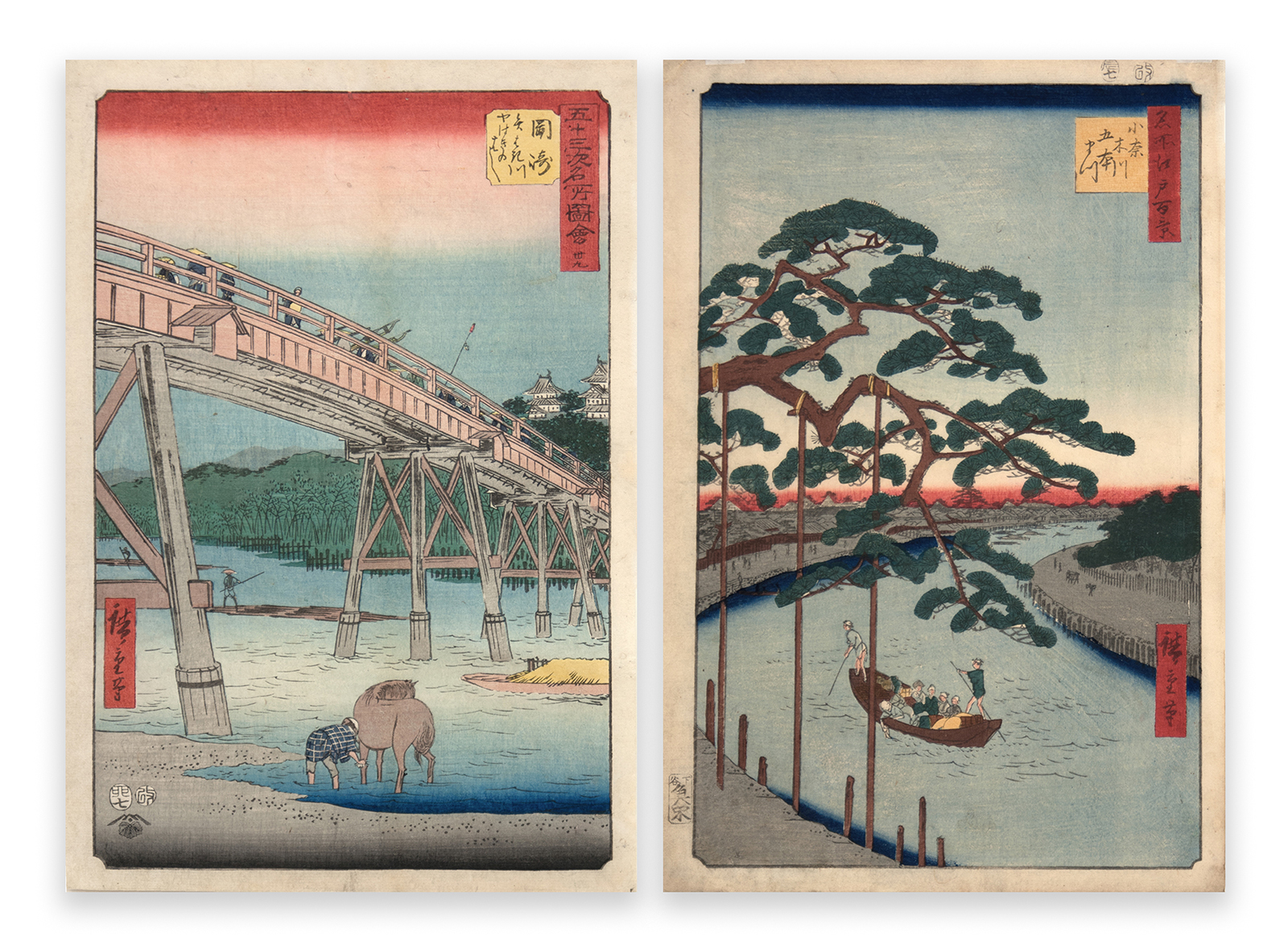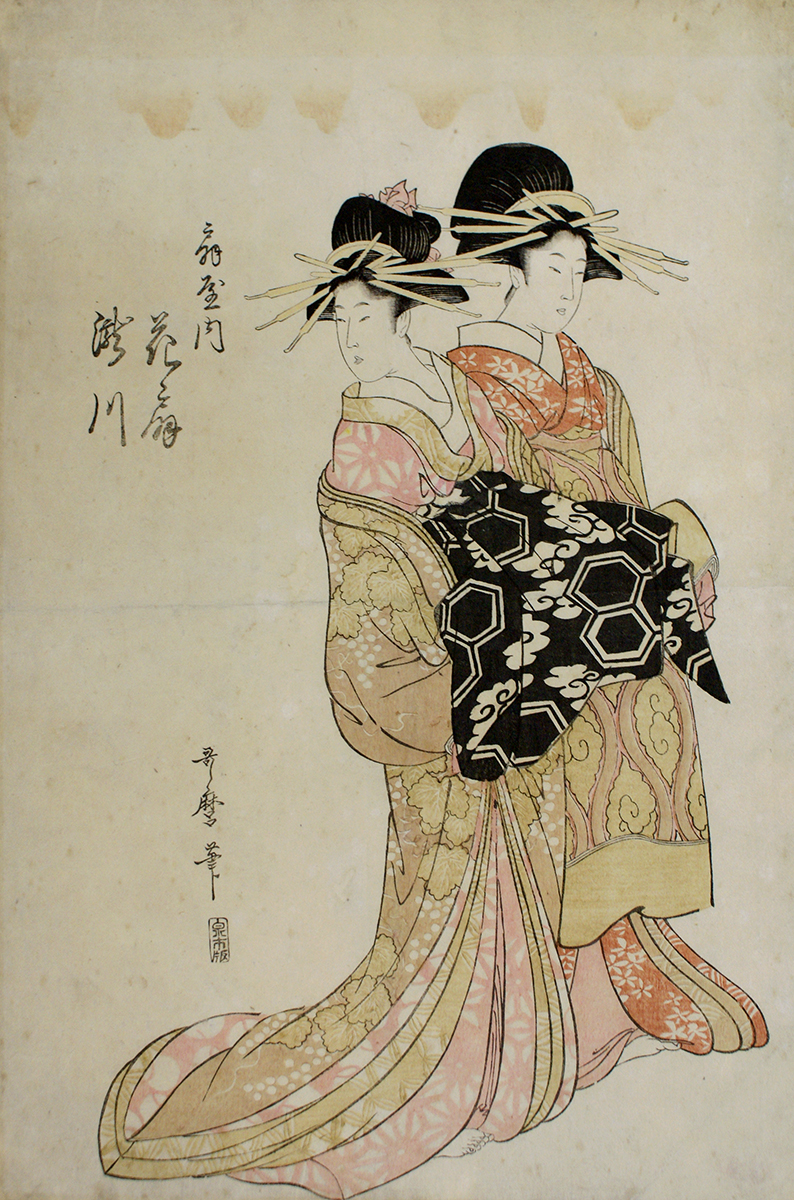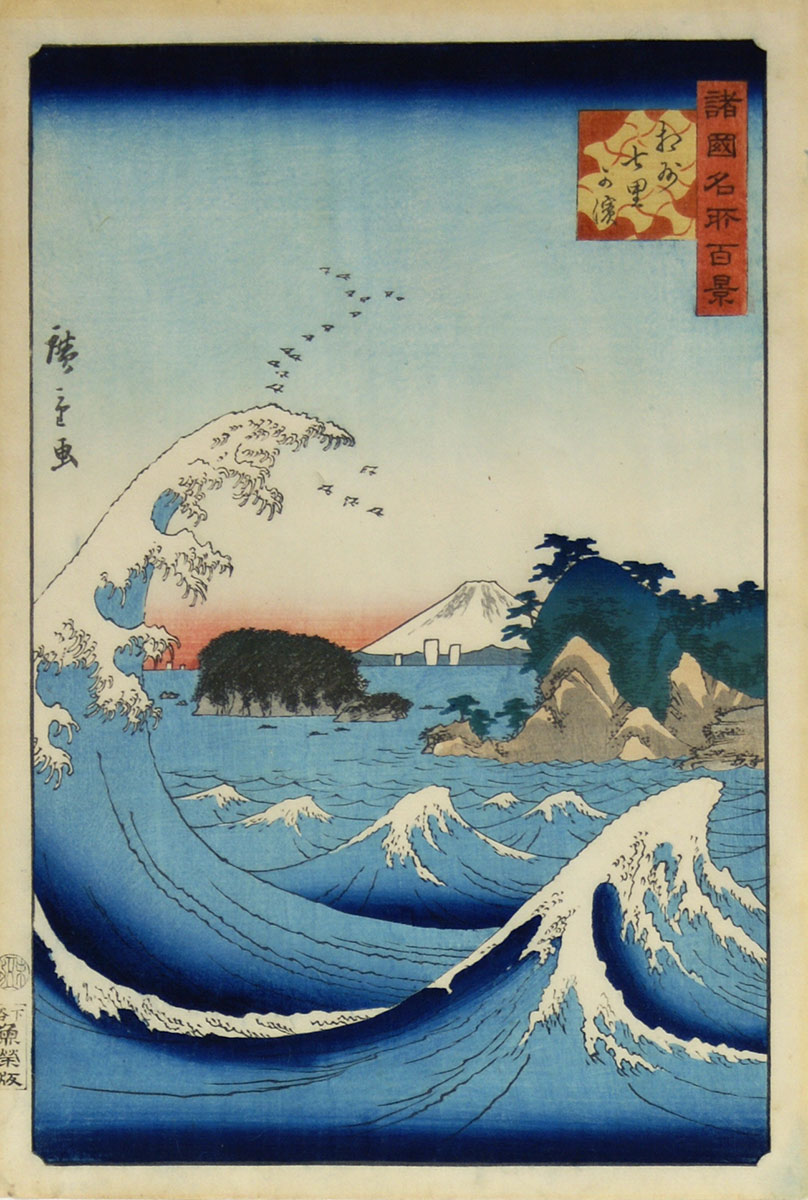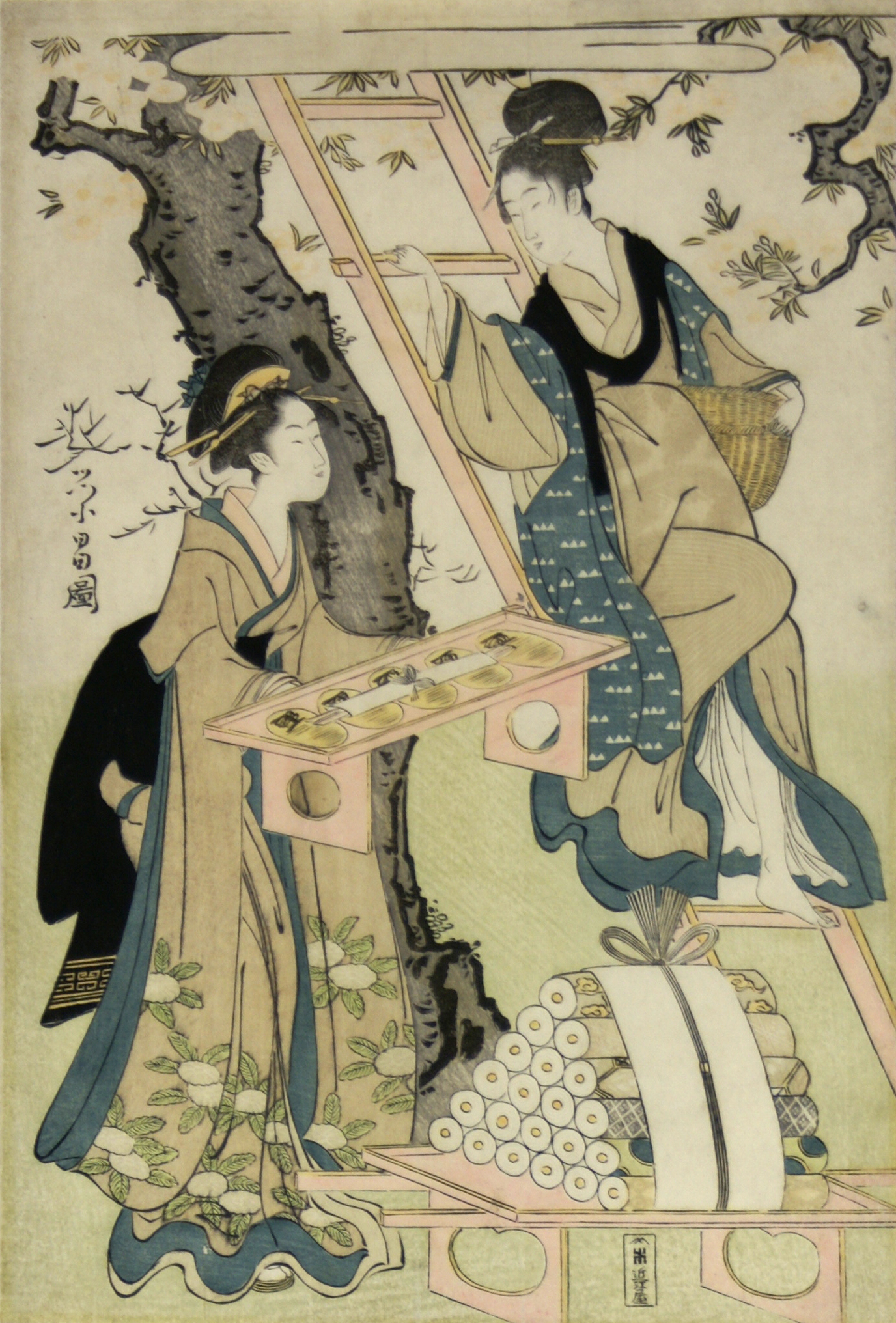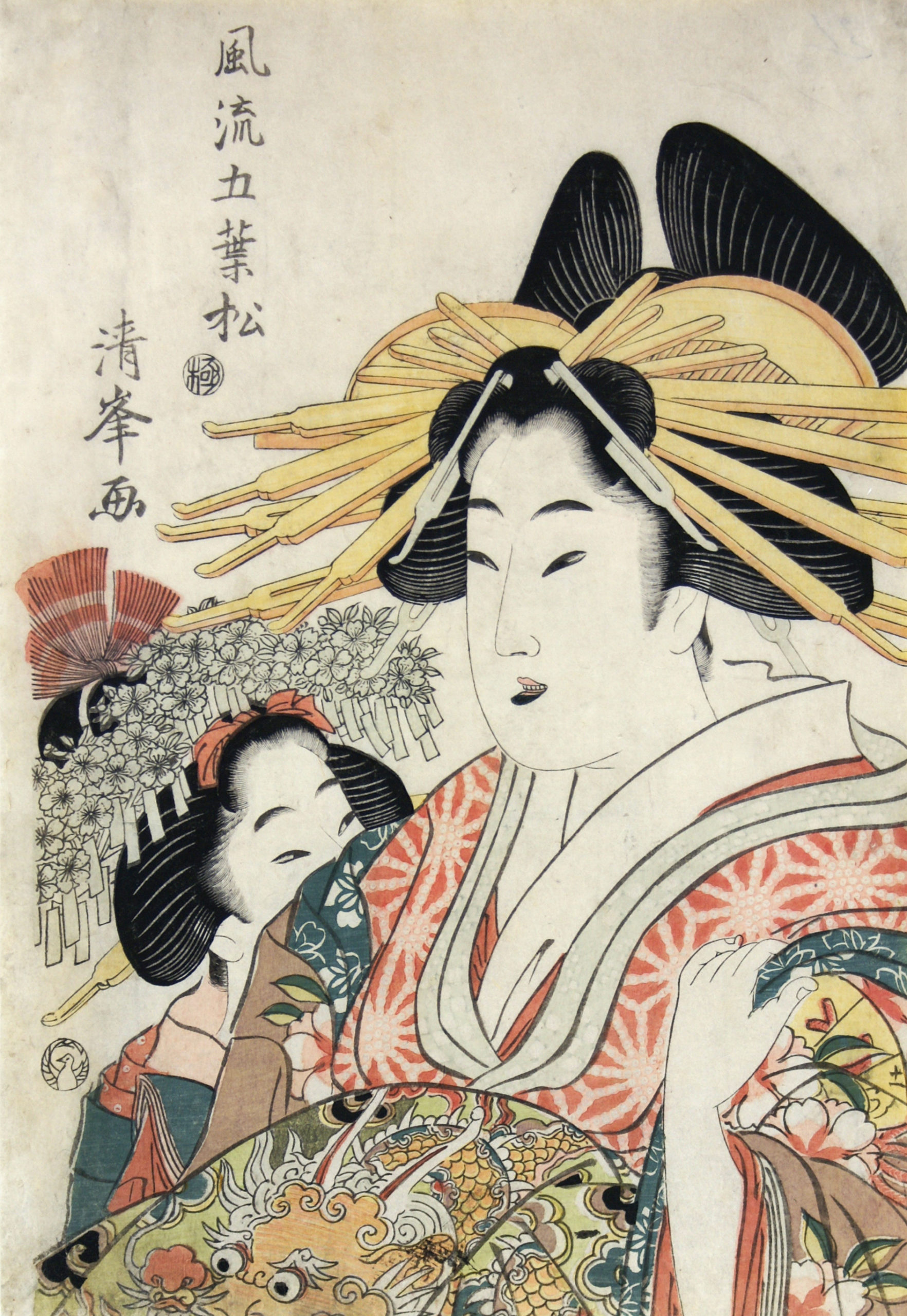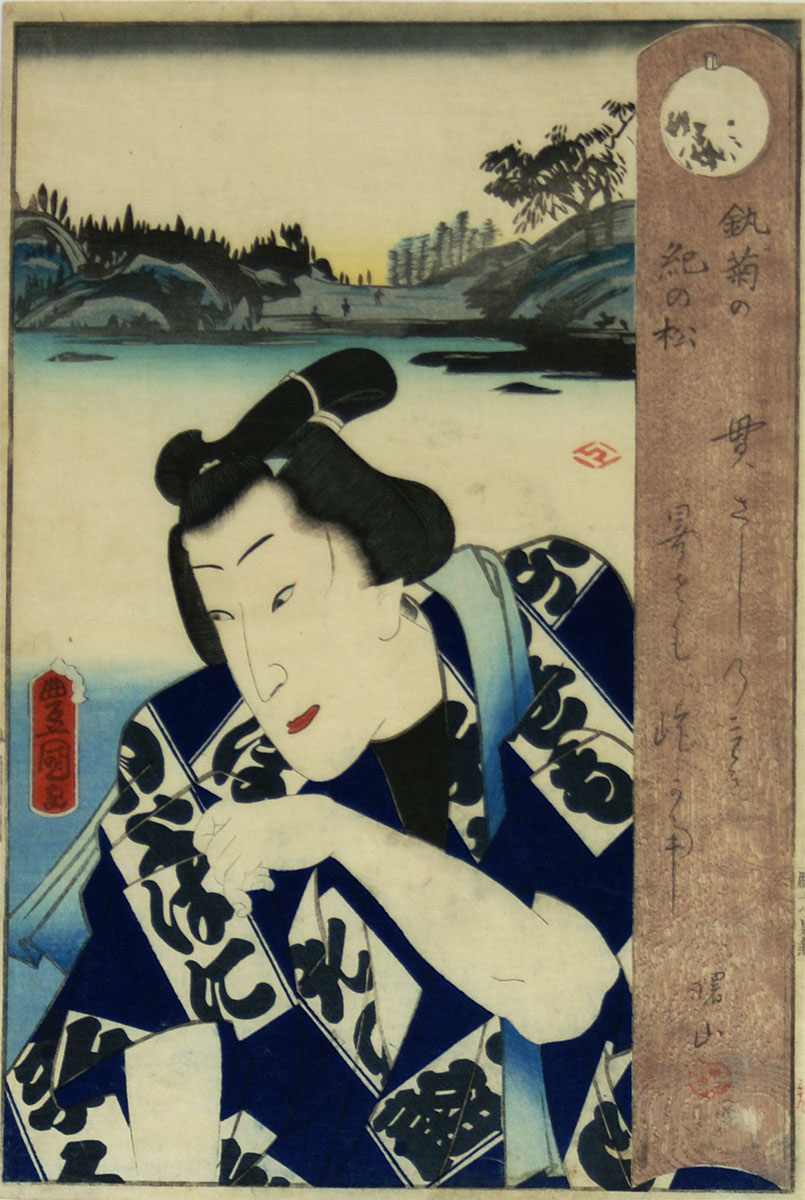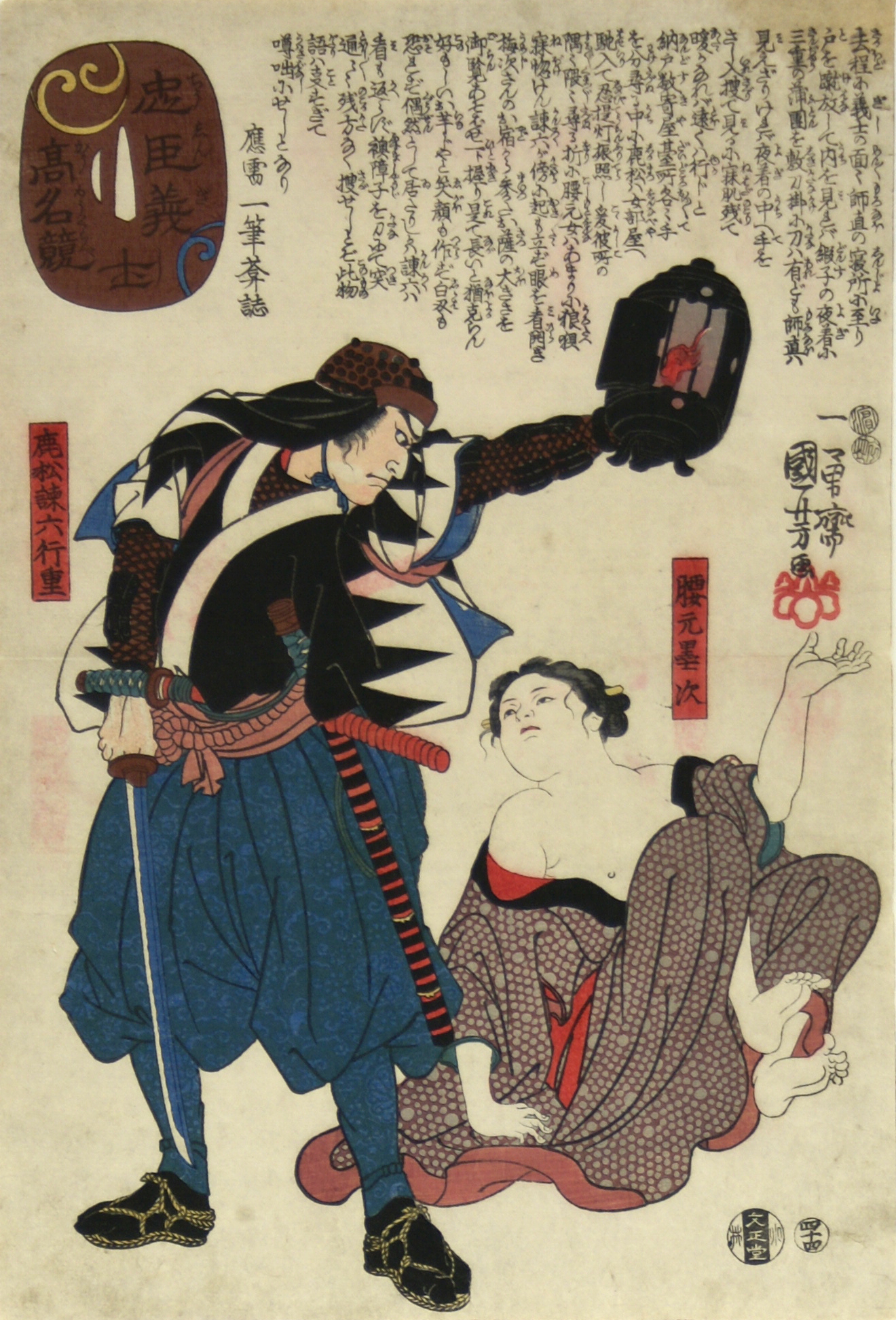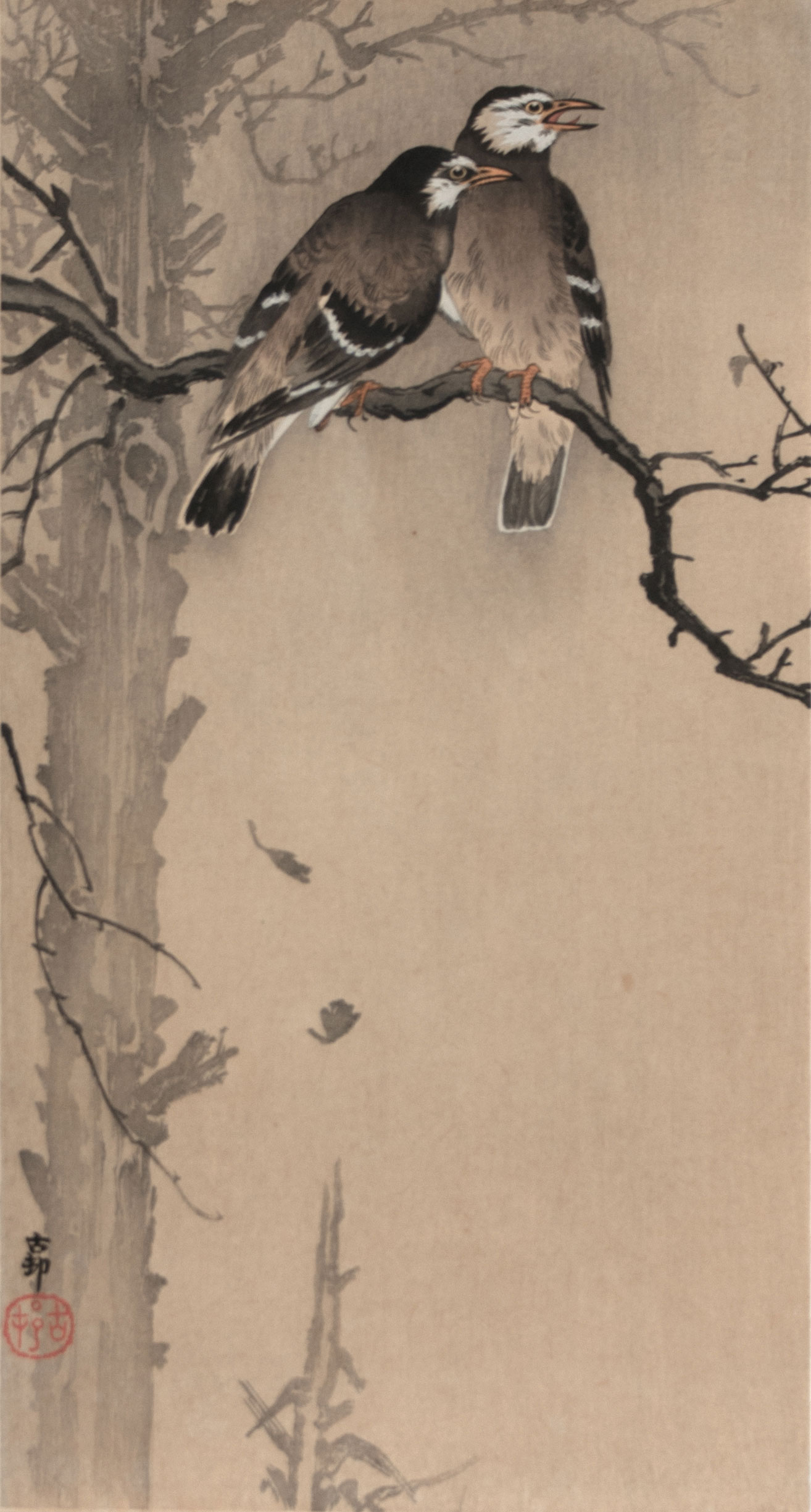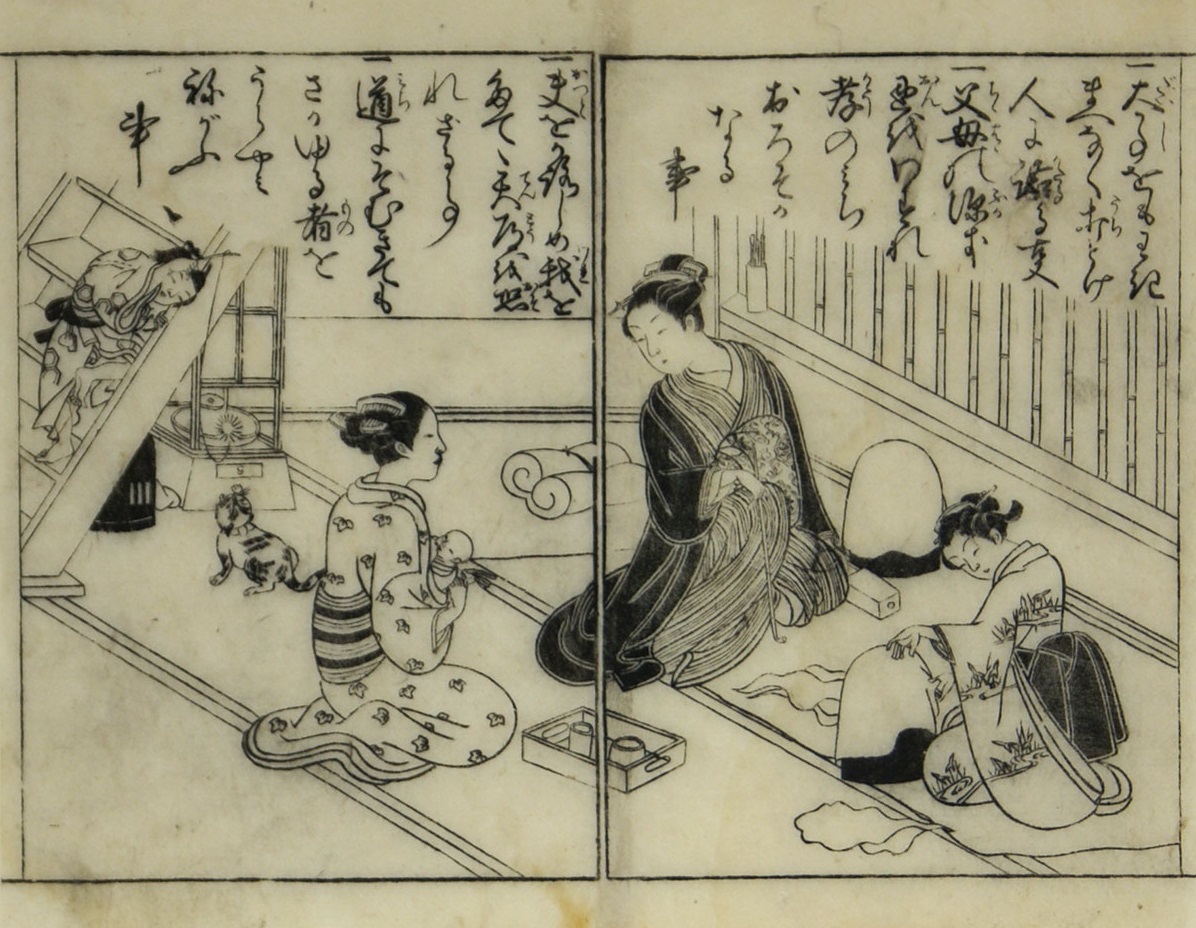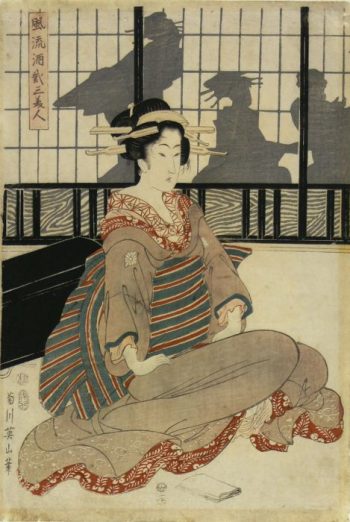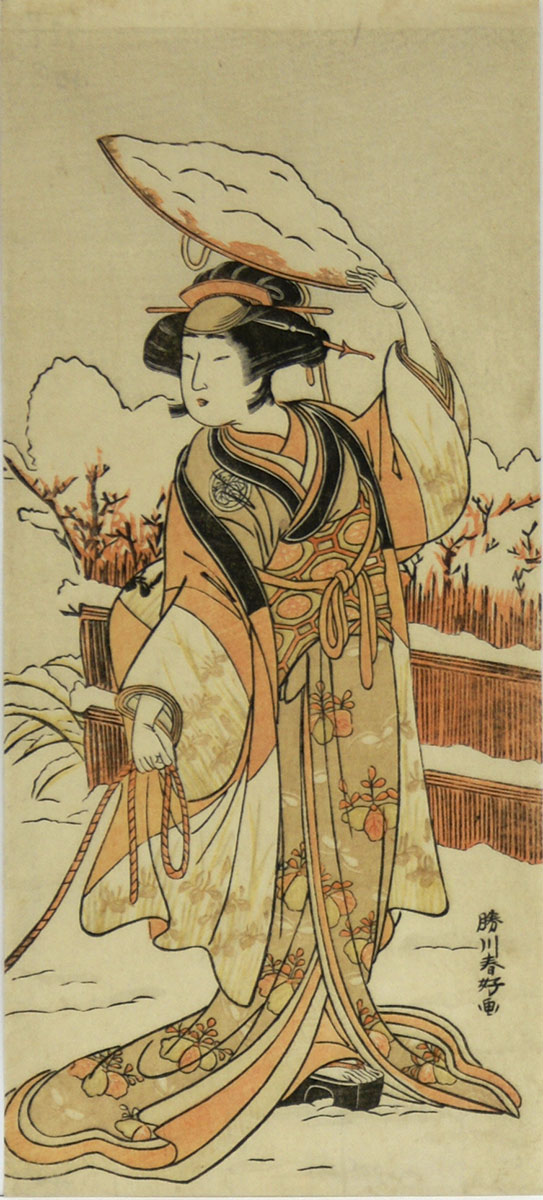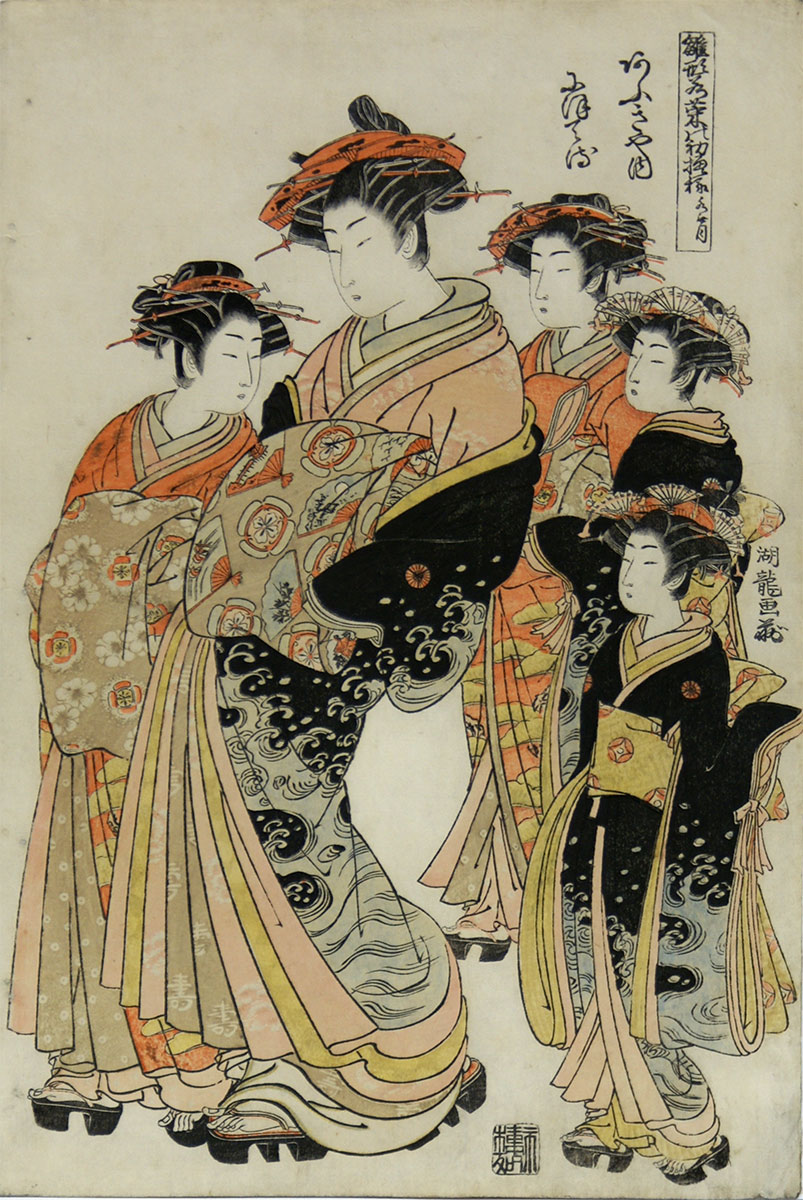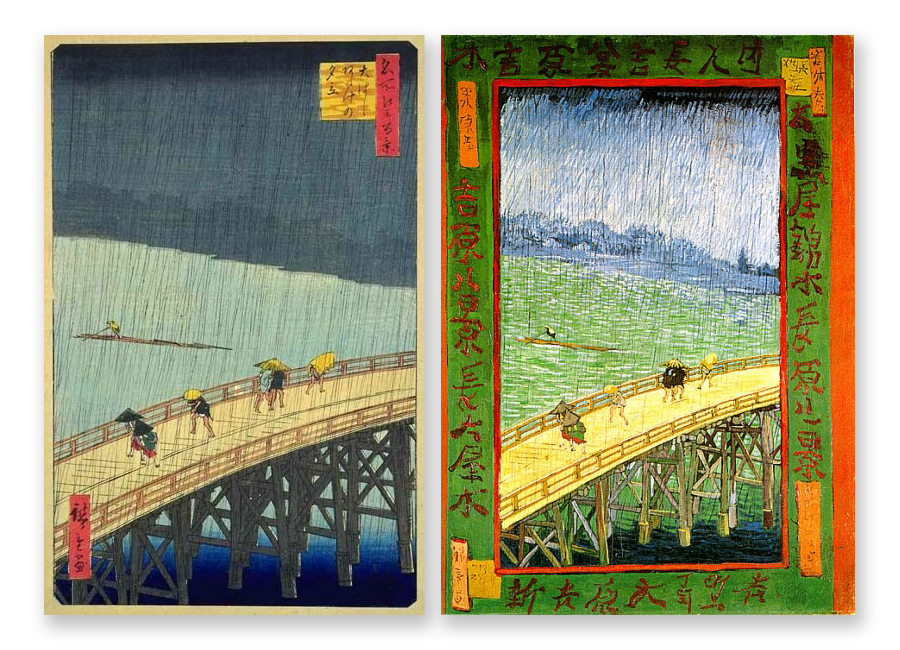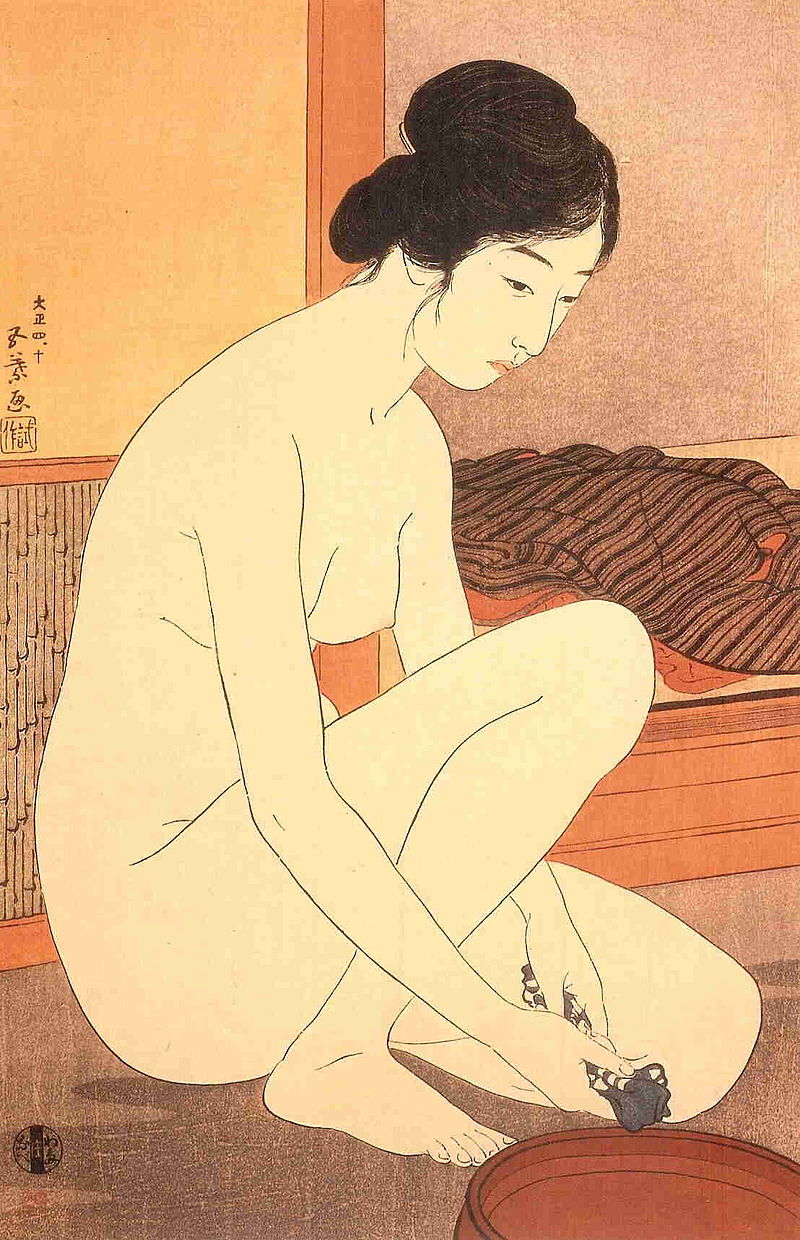Artist of our Japanese woodblock prints
The Japanese color woodcut
From 1870 the Japanese woodblock print spread throughout Europe, inspiring many artists with its colourfulness, ornamentation and perspective, and setting significant impulses for the development of modern art.
Japanese woodblock prints were already offered in the frame and gilding workshop “Friedrich Welz, Gilders” and have been part of the gallery program since 1970. There is a selection of reasonably priced works that are suitable as an introduction to collecting, as well as high-quality woodblock prints from the 18th to the 20th century, including shungas (erotica), surimonos (greeting sheets), shin hangas, Japanese playing cards and ink drawings.
Stylistic devices
These are characteristic of the early Japanese color woodcut
- Lack of light and shadow effects
- Objects and people are drawn with clear lines
- areas filled with color or with ornaments
- Lack of perspective, lack of a center point
The aim of the representation is not the lifelike reproduction of a subject,
but the representation of his being, his character.
Technique of the Japanese color woodcut
The Japanese color woodcut is one of the relief printing processes. The production of a classic colored woodcut took place in several steps in which at least four people were involved.
The publisher (client, financier, coordinator, distribution and sales), the artist (supplies the motif), the wood cutters (making the printing plates) and the printer.
The artist creates a sketch that serves as the technical basis for the woodcut.
The wood cutter glues the drawing onto the wooden stick (usually cherry wood) and transfers the artist’s sketch to the printing stick. When the drawing is transferred to the wooden stick, the glued-on preliminary drawing is usually lost during processing, only thin, sharp burrs remain on the stick itself. Anything that is not cut out of the wooden board is absorbed by the printing ink. A separate plate must be cut for each color value. Attached registration marks ensure maximum accuracy when the individual plates are overprinted.
The printer places the Japanese paper prepared with glue and moistened, which has been valued for its high tear resistance, elasticity and absorbency, on the printing block and the imprint is made with a reaming device. Surface effects in the textile ornamentation (embossing, lacquer look) were achieved by blind (relief) printing and mixing the printing ink with glue.
The publishers and artists are noted in the cartouches on the Japanese woodblock prints. Wood cutters and printers were only very seldom recorded by name on the prints.
Due to the hard printing block, large numbers of Japanese woodblock prints could be produced. Early leaves are characterized by their restrained coloring.
Successful color woodcuts and books were reprinted. If sales were good, the printing blocks were quickly printed out and worn out and were recut. Often the colors changed with late and new prints.
By 1842 ten to twenty printing plates were used for a color woodcut, the record in 1841 is said to have been 78 plates for a single print. From 1842 the number of color plates was limited to eight.
Around 1830, the strong Prussian blue prevailed in Japan and the new synthetic colors imported from Europe replaced the old organic and mineral colors.
In addition to many other paper formats, the ōban (approx. 24 × 36 cm), chūban (approx. 18 × 27 cm) and shikishiban (approx. 18 × 18 cm) formats were common for multi-color printing.
Stars and scenes from the Kabuki theater, actor portraits, scenes from the life of the rich and beautiful, portraits of beautiful women, courtesans, geisha and women of brothels, sumo wrestlers, warriors, samurais, ronins, memorial pictures, famous sites, Landscape pictures, nature pictures, plants and animals , Joke pictures, legend pictures and pictures of protective and lucky deities.
Story
The technique of woodcut has been proven in Japan since the 8th century and found worldwide distribution. The first commercially produced woodcuts in publishing houses were created around 1600 in Kyōto from 1670 in Osaka and from 1730 in Edo (today’s Tokyo). From the beginning, the focus of the presentations was on entertainment literature and illustrations.
The first single print pictures appeared in the second half of the 17th century (b / w pictures), around 1700 hand-colored prints with one or two colors were created. From around 1740, prints were made with three printing plates (black, pink, green); real multi-color printing began in 1765.
The world exhibitions in London in 1862 and in Paris in 1867, at which current woodblock prints were presented alongside other products from Japanese handicrafts, drew the attention of art lovers to the appeal of Japanese products. Artists, critics and collectors were impressed by the quality of the craftsmanship and the artistic expressiveness of the Far Eastern works.
Influence of Japanese woodblock prints on European artists
Impressionists, artists of the Art Nouveau , of the Vienna Secession and many Expressionists were influenced by stylistic elements of the Japanese woodblock print. Essential elements of the color woodcut, clear lines, stylized forms and areas filled with color, were consistently integrated into the technique of western painting. Artists like Vincent van Gogh, Paul Gauguin , Henri Toulouse-Lautrec, Edvard Munch and many others took up aspects of this technique. In the 20th century, expressionism in Germany brought the technique of Japanese woodblock prints to a climax.
Influence of European art on Japanese art
From the 19th century onwards, more and more European influences came to Japan, and Impressionism in particular had a strong impact on Japanese artists, who were tired of the highly formalized representations of the ukiyo‑e “images of the flowing world”.
At the beginning of the 20th century, new forms of Japanese woodblock prints emerged. The stylistic language of the classic Japanese woodcut was retained, but people were represented more individually and played with light and shadow, shin hangas (new prints) and sōsaku hangas (creative printed images) were created.
Influence of European art on Japanese art
From the 19th century onwards, more and more European influences came to Japan, and Impressionism in particular had a strong impact on Japanese artists, who were tired of the highly formalized representations of the ukiyo‑e “images of the flowing world”.
At the beginning of the 20th century, new forms of Japanese woodblock prints emerged. The stylistic language of the classic Japanese woodcut was retained, but people were represented more individually and played with light and shadow, shin hangas (new prints) and sōsaku hangas (creative printed images) were created.

